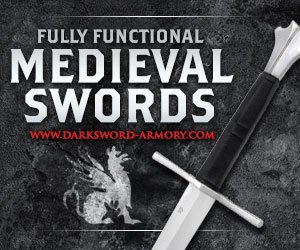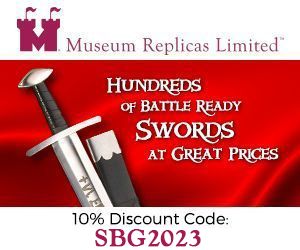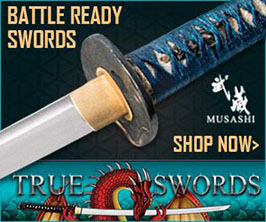- Home
- Ultimate Katana Buyers Guide
- Traditional Katana
- Paul Chen Hanwei Swords
Putting Paul Chen Swords to the Test: The PPK
When this review was first written, Paul Chen Swords by the Hanwei forge were pretty much all that was available for a $300 Katana that could actually be described as functional.
As such, this is SBG's oldest Katana review - but surprisingly while it has in recent years experienced a massive influx of competition - the humble Practical Plus Katana still holds it's own, despite inevitable price rises that have pushed it well above its original sub $300 price tag..
So without any further ado, let us take a look at the 'granddaddy' of the modern day low cost, fully functional Katana category.
Hanwei Forge's Practical Plus Katana Review
Review by SBG Editor in Chief, Paul Southren
|
Steel Weight Point of Balance Price Range |
1065 Carbon Steel 2.5lbs 4" from tsuba US$399-519 |
After messing around with wall hangers for years, convinced that I would never be able to actually ever afford to buy any authentic Japanese swords, I stumbled upon the Hanwei line, began to do a little research, and soon realized why these Paul Chen swords appeared to have such a strong, almost "cult like" following the world over...
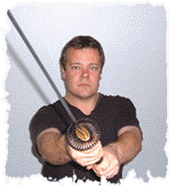
Most of the initial information I got about these swords was gleaned from postings on the esteemed (now defunct) Sword Forum International.
On the one hand there were quite a few senior forum members who were critical of these Paul Chen swords, more or less writing them off as mass produced junk and recommending to save a few thousand dollars for a more authentic Japanese sword. Yet it seemed that many people there who actually owned one considered them to be good value for money...
Now while there were 3 authentic Japanese swords in the Practical Katana series - The Practical Katana (PK for short), the Practical Plus Katana (the PPK) and the Practical Pro Katana (no abbreviation!) - I had done my homework and found out that the most popular of these three Paul Chen swords was the Practical Plus Katana.
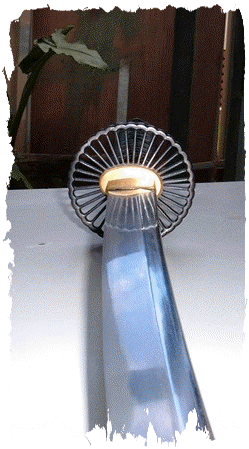
For a while, I was quite tempted to go for the Practical Katana (the plain vanilla model). At the time its lesser cousin was available for a price of around US$151 to $220 which made the Practical Katana looked like an absolute steal. But the PPK just had too many additional features, including much more traditional fittings and the ability to be disassembled for cleaning or further customisation if desired, while the Practical Katana was glued together and cannot be dismantled.
The Practical Pro on the other hand was rarer and more expensive than the PPK by around US$50 to $100 depending on where you buy it (these are 2005 prices). My research was suggesting that this sword used the blade of the 1st generation PPK, which was supposedly thicker and better suited to test cutting. However, while the pro could be disassembled, the fittings were again cheap synthetics like the PK...
With my mind made up, I did a little price shopping - took a risk - and bought it for a "buy it now" price of US$215 + $50 shipping (it had to come from the US and I live in Australia) on eBay (a lot has changes since then. Now the best price is nearly double what I paid and shipping overseas is becoming harder by the day - but the sword itself remains unchanged).
Anyway, in hindsight buying these Paul Chen swords on eBay really was a risk... All too often, there are problems with bent, pitted, blunt or poorly heat treated blades on the Practical line of Katana as they leave the factory in China - with the onus being on the sellers to check them and send any defective pieces back to the distributor...
Anyway, with this in the back of my mind, soon enough I received a phone call from my wife that my much anticipated package had arrived.
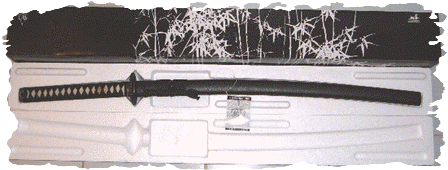
When I got home, I somehow managed to resist the urge to rip open the attractive black Hanwei box with the bamboo pattern - so eager I was to actually check these swords out firsthand. Fighting the urge, I carefully and deliberately removed the form fitting polystyrene casing, and opened it to gaze upon my new purchase for the first time.
With bated breath and great expectations, I took the sword in my hands and drew it from the sheath and spent a few moments to closely examine the blade - and at first I was shocked! It looked like the blade was pitted, scarred and scratched..!
However, I can't say how relieved I was to discover that what I was seeing was only some sawdust from the wooden scabbard that had settled on the lightly oiled blade (actually, even well over a year later this sawdust persists and is still on the blade every time it is drawn...)
"Now I know it’s not the best practice in the world, but I just had to get some idea of how sharp this baby was..."
So I took my thumb to the edge of the blade, applied a little pressure and while I can't remember the exact word I exclaimed - whatever it was, it wouldn't be polite to repeat it here! Suffice it to say, the edge was so sharp - on some primal, subconscious level it actually frightened me - unused as I was to the deadly razor sharp edge of authentic Japanese swords.
For the next few minutes, I took my time to fully admire this beautiful - and very deadly - weapon.
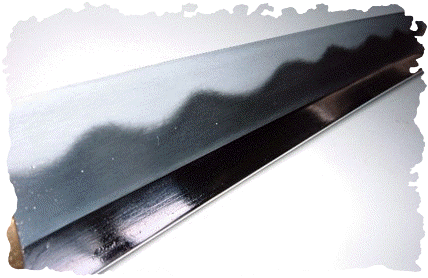
The Hamon line was acid etched, so I could not see the original temper line. But the acid etching was not unattractive, and certainly looked a lot better than the jagged "shark tooth" style "Hamon" you see on so many cheap Japanese style swords.
Grabbing one of my wall hangers for comparison, I saw for the first time what a real rayskin handle looks like and took in simple beauty of this authentic Japanese swords brass and copper fittings.
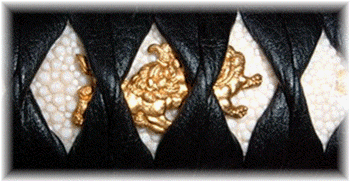
However, to misquote an old saying - the proof of the pudding was in the eating. So despite the fact that it was dark outside, I decided to take the sword out for a few practice swings.
Now while the weight of this sword was ideal at 2.5lbs, the blade of these Paul Chen swords, which are now in their second Generation, had been lightened and thinned - some say as a cost saving exercise, others saying it was to help balance what was previously a somewhat unwieldy sword.
At the time, I thought it handled very well. But the point of balance is just a little too close to the tsuba (handle) at around 4", where ideally a sword of this weight should sit around 6 to 7"... Never-the-less, the second Generation PPK is a fast and agile sword, which when combined with the frighteningly sharp blade, makes it a truly formidable length of steel...
"All in all, I think it is fair to say that I was MORE than happy with my purchase!"
In fact, the ONLY thing that I didn't LOVE about this sword from an aesthetic point of view was the synthetic leather wrapping on the handle.
But it wasn't until I decided to put the Practical Plus Katana through it paces by testing it against plastic bottles filled with water, cardboard boxes, river cane bamboo and beach mats that I really began to appreciate the comfort factor of the synthetic wrap on my hands after repeated use, not to mention this Paul Chen swords functionality.
Test Cutting with the PPK
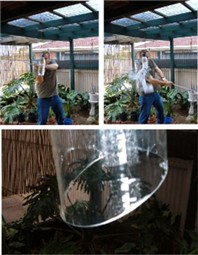
My first tests of these Paul Chen swords were the classic "water filled plastic bottle cuts" - a favorite technique popular with sword and knife enthusiasts the world over for determining a blades sharpness and it's ability to reach maximum velocities. After all, as a friend of mine pointed out, he had in his youth shot full water bottles with a .22 caliber rifle - and more often than not, the bullets would actually bounce off!
Unlike many sharpened European style swords, which can handle large soda bottles with ease, smaller "buddy sized" bottles are more often than not simply sent flying through the air with a dent in them.
Not so with a good quality Japanese sword...
As you can plainly see from the pictures, the differentially hardened edge of these Paul Chen swords cuts through such bottles so smoothly that the impact is barely noticeable. It almost seemed that the bottle wasn't even there at all! In fact, if it wasn't for the flood of water rushing from the bottom of the severed bottle, I might have actually thought I had missed...
The bottle barely moved, such was the sharpness of the blade, and I was more than impressed when I checked the bottle to see a perfectly clean diagonal cut.
Such is the sharpness and cutting power of these swords that even against a row of water filled milk jugs, the cut is clean, effortless and devastatingly effective.
For my next test, I decided to try the outer cardboard box that my sword had been sent to me in (it was double boxed, the original Paul Chen swords box was a keeper!).
A simple horizontal cut sent the top of the box flying away as the base slowly toppled and fell to the ground.
Too easy!
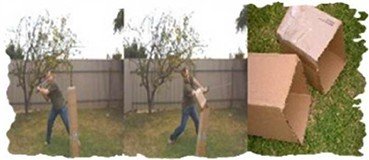
Cutting Cardboard
As strange as it might seem, cutting cardboard can often scratch or rapidly blunt a blade - probably because most cardboard boxes are made from recycled materials and may contain elements as glass, bits of metal and other general abrasives.
Despite how easy it was though, I checked the blade for any signs of wear and tear, but it was as sharp as ever.
Anyway, the blade was hungry for more (so I sliced and diced the box all the way down to the ground) and by this point, with still no ill effects, it was apparent that Paul Chen swords are well tempered and keep a good edge.
Anyway, the blade was hungry for more (so I sliced and diced the box all the way down to the ground) and by this point, with still no ill effects, it was apparent that Paul Chen swords are well tempered and keep a good edge.
What I really wanted to try next was something that would show me just how "clean" the cut of these Paul Chen swords actually are. So to achieve this, I went down to the nearby woods with a machete and selected a few nice green lengths of bamboo...
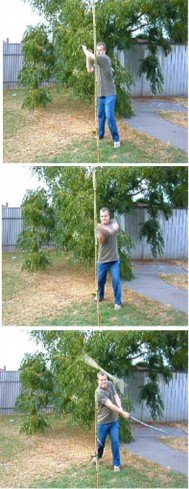
Now unfortunately, the thick “traditional” bamboo used in test cutting does not grow wild where I live (South Australia) however the bamboo I selected was deceptively tough (I believe it is called "river cane"), taking 2 or 3 solid hits at the base to cut through them with my carbon steel machete. I knew that if the blade of my katana wasn't properly sharp, there is no way on earth I could cut through them with one hit...
Once I got them home, since I didn't have a proper test cutting stand handy, I had to improvise.
I hacked away diagonally at one end of the river-cane with my machete to form a point and stuck the river cane into the ground as deeply as I could (which actually, wasn't that far!)
Stepping up the bamboo, I raised the sword and cut downwards, relying on the speed and weight of my sword to do the cutting.
The river-cane gave practically no resistance to the blade, and when I examined where I had cut, it was clear just how sharp and deadly Paul Chen swords really are.
While the diagonal downwards slices were impressive, it was the rising diagonal cuts that were the cleanest - with a smooth and perfectly defined cut.
The only ill effect from all this test cutting was a slight smear on the blade from the bamboo “sap” - but this wiped away with a little spray of WD40 and some cloth.
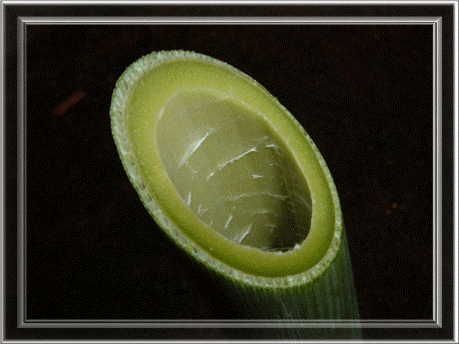
For my final test, I decided on something a little more "traditional". Something that would truly determine if these Paul Chen swords were truly worthy of being called "functional".
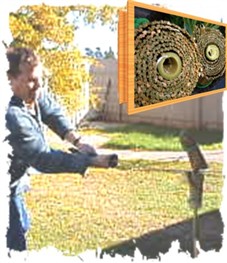
Unable to quickly procure an authentic Tatami Omote Mat at the time, I bought a few rolls of the closest thing I could find and bound it to a length of river-cane until I had a total diameter of just over two and a half inches, and then let the whole thing soak overnight.
Such a target, so I am led to believe, would be rather close to the thickness and consistency of a human wrist...
When I lined up the sword, I wasn't sure what would happen and to be honest, I wasn't 100% certain that my strike would cut all the way through.
And as a result I struck out with all my might, expecting a fairly difficult cut.
But it wasn't necessary...
The blade passed easily and cleanly through the mat, the bamboo (it actually hit a nodule, making the cut even harder than I had intended) and out the other side again without a bare minimum of resistance.
As usual, the blade showed no ill effects whatsoever and it was only then that I began to truly appreciate how sharp these Paul Chen swords really are.
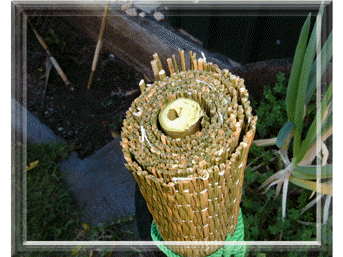
Since then I have performed numerous other test cutting exercises like the ones above, and on all occasions these swords have never ceased to impress me.
And I can't stress enough that whenever you handle one of these Paul Chen swords, you REALLY need to respect their keen cutting edge!
Conclusion
As stated at the start of this review, maybe I was lucky - maybe I just ended up with a much better quality PPK than usual.
The reality is that due to the aforementioned quality control problems with this line, it is important to buy these Paul Chen swords from a dealer who inspects the blades prior to shipping rather than to leave it to chance. This is especially important considering the recent influx of cheaply made PPK look-alikes appearing on the market, making buying these swords at the lowest price on eBay something of a dangerous proposition...
But after all is said and done - if you get a good PPK, the
balance between beauty and functionality is exceptional and certainly
these Paul Chen swords are a very good deal for the money.
PROS
- Good quality materials (especially the rayskin) and assembly
- Fast and agile blade
- Great cutter straight out of the box
CONS
- Psuedo Leather ito looks ok, but would be better if it was real
- Real hamon faint and covered over by 'frosty' acid etching
- Quality control issues
WHERE TO BUY
In all honesty, it is no longer necessary to take such a risk and buy Paul Chen swords on eBay like I did now. Primarily because, there is one respected sword seller who stocks them at very close to the original ebay price, pre-inspects before sending, ships worldwide and has a generous 45 day return policy...
I am speaking of course about Kult of Athena who stock it HERE for just US$399.95 and ship worldwide - a full $120 lower than the official distributors price of $519.. Not quite as good a price as it was in 2005, but accounting for inflation and sword prices generally, it is STILL a fantastic choice for a first sword..
I hope this information on Paul Chen swords and the Hanwei forge has been helpful. To return to A Beginners Guide to Authentic Japanese Swords from Putting Paul Chen Swords to the test – the Practical Plus Katana!, click here.










